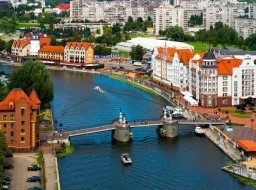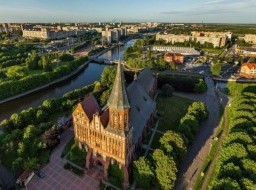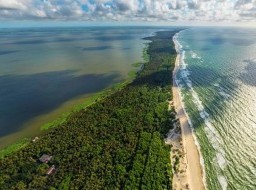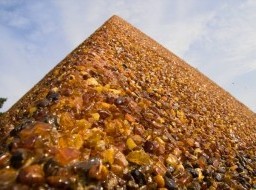Curonian Spit
Curonian Spit National Park was established in 1991 to protect the rare ecosystems found on Curonian Spit, including the sand dunes, the Curonian Lagoon and the surrounding sea. It covers most of the Lithuanian section of the spit, running from the village of Smiltynė in the north down to Nida, 50km to the south. The Curonian Spit is known as the pearl of the Baltic Sea. It is a long stretch of wind-blown sand dunes, surrounded on the two sides by the Curonian Lagoon and the Baltic Sea. You only have to come once to this special place, and make sure about its indescribable beauty for yourself. Curonian Spit is a unique example of traditional lifestyle and balance between the agricultural and marine resources. The sand stripe of 98 kilometres, washed by the Baltic Sea on the west and the Curonian Lagoon waters from the east, is a wonderful joint working of nature and human efforts. The current landscape of the Curonian Spit was formed by residents struggling with the inexorable wind and attempting to tame the sand carried by it. Because of this unique union of man and nature in shaping the landscape, the Curonian Spit was declared a national park and was included in the UNESCO World Heritage Site. According to the legend, the Curonian Spit was poured by a giant woman Neringa, who played on the beach. Some people believed that Neringa is a female version of the Greek hero Heracles. Historians claim that the Curonian Spit was formed 5000 years ago and more than a millennium ago this place was an active pagan centre. In the eighteenth century the rolling sand dunes buried many settlements and fishing villages, because there was not enough wood for the installation of dune reinforcements at the time. For this reason the Prussian government launched a massive reforestation of the Curonian Spit in the beginning of the nineteenth century. Today, most of its parts are green with forests and pine forests that protect this wonderful natural formation. After the collapse of the Soviet Union tourism started flourishing in the Curonian Spit, attracting numerous visitors every year, who are happy with the silence, cleanliness, and the soothing wavy Baltic Sea, relaxing environment and the highest dunes in Europe, with an average height of 35 meters, and the highest dune over 60 m in height. |







